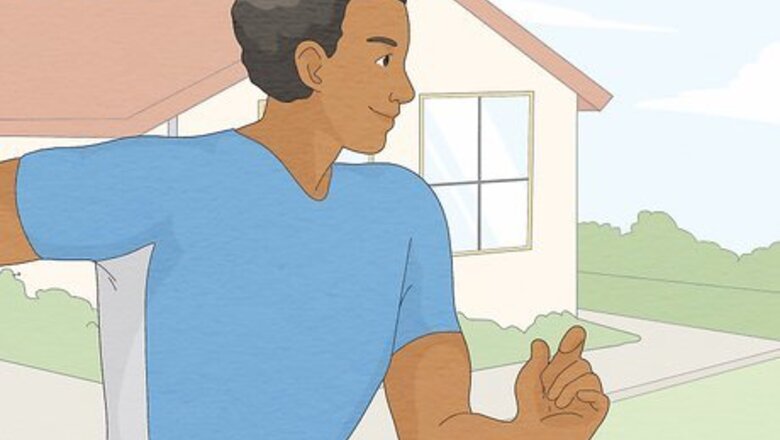
views
Finding Exercises to Burn 300 Calories in 30 Minutes

Go for a jog. One great calorie burning exercise to try is jogging. It's a higher impact exercise that requires the use of many large muscle groups to perform. To burn at least 300 calories in a half an hour, you have to jog or run. Aim for your pace to be around a 10-minute mile or 6 mph (if you're on the treadmill). Keep in mind that the number of calories you burn during any type of exercise will depend on factors like your sex, age, weight, and effort level. Note that the faster your pace, the more calories you'll burn in that 30 minute time span. Although it's commonly believed that walking burns the same calories per mile as running, it'll take you more than 30 minutes to walk 3 to 4 miles.
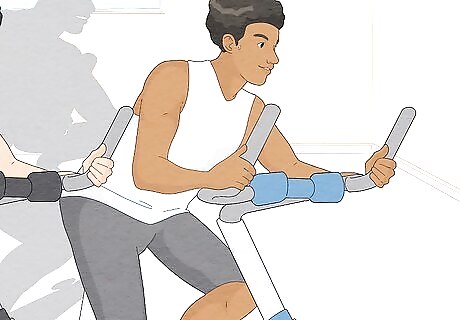
Take a spin class. A high intensity aerobic exercise you can also try is a spin class. These classes are notoriously challenging and will help you torch calories in a short amount of time. The reason why a spin class is so good at burning calories is that it alternates between moderate and high intensities, requires you to use large muscle groups (like your legs) and keeps your heart rate elevated. You may burn around 400 calories in 30 minutes of spinning depending on your age, weight, sex, and effort level. Note that you need to make sure you're working at a minimum of moderate intensity to reach this calorie goal. This means keeping the resistance up and not taking many breaks. Many spin classes run for an hour. Check your gym’s class schedule to see if they offer any 30 minute classes.
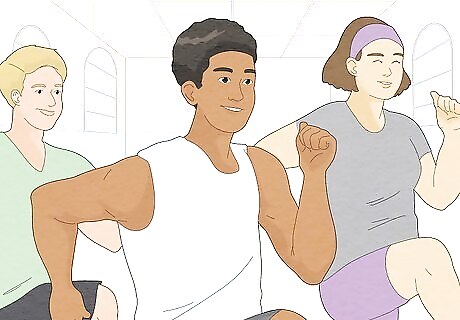
Sign up for an aerobics class. If you're more of a group exercise type of person, consider signing up for some aerobics classes. Many of these are high in intensity and will help you meet your 300 calorie goal. Look over the fitness class schedule at your gym. See if there are any fitness classes that are designed to burn a lot of calories. For example, some high intensity Zumba, kick boxing, high intensity interval training (HIIT), circuit training or step aerobics classes will help you meet your calorie burn goal. Many of these classes can help you burn around 300 calories in 30 minutes. Make sure you're working at a higher intensity.
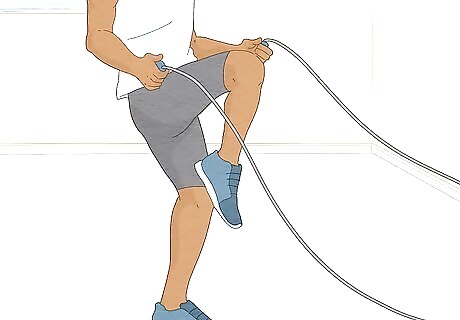
Grab a jump rope. A fun exercise you can do is jumping rope. Bring back childhood memories and torch about 300 calories in 30 minutes. You might be surprised to know that jumping rope is a great calorie burn. While you do need to work harder than a game of Double Dutch, it's a great form of exercise. In general, moderate to high intensity versions of jumping rope can help you burn about 350 calories in 30 minutes. But remember that the amount of calories you burn may be more or less depending on your weight, age, sex, and effort level. Increase the intensity or difficulty by changing speeds, crossing the rope in front of you or jumping on one leg.
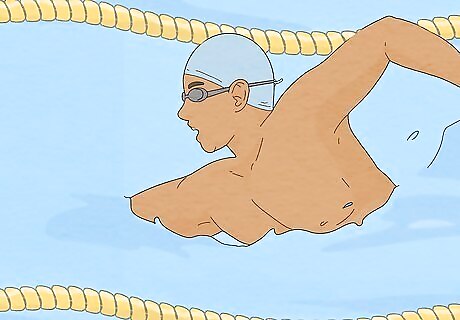
Go for a swim. Some forms of swimming can also help you burn calories in a short amount of time. Plus, these pool workouts are easier on your joints. Swimming, like the rowing machine, recruits just about every major muscle group in your body. This is why it's such a great exercise for higher calorie burns. In general, treading water or swimming laps may burn just around 300 calories in a half an hour. However, if you do harder or more difficult strokes, the total calories you burn will increase. For example, doing the butterfly stroke or crawl may burn around 330 calories in a half an hour.
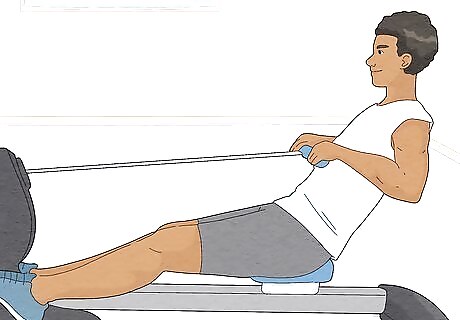
Get on the rowing machine. If you want to use a machine, the rowing machine might be a good option for you. This may help you meet your 300 calorie goal. One of the reasons that the rowing machine can help you burn so many calories is that it requires you to use large muscle groups. When you have more muscles engaged, your body needs to use more energy (or calories) to fuel those muscles. Remember that calories burned will depend on factors such as your age, weight, sex, and effort level. For example, in a 30-minute time period, a 30 year old 180 pound male working at 75% of his full capacity may burn about 316 calories.
Helping Your Body Burn More Calories

Increase the resistance and difficulty of your exercises. Burning 300 calories in 30 minutes should be fairly easy. However, to help make sure you hit the goal and to even exceed it, try increasing the resistance and difficulty of your exercise routine. In general, the more challenging a workout is, the more calories you'll burn. You can increase the speed, pace, resistance, weight or add incline to make workouts more challenging. For example, instead of just running at a steady pace, alternate between jogging and sprinting or jogging on a flat surface to jogging on an incline. You'll burn more calories per 30 minutes when you add in these fluctuating levels of difficulty. In addition, you can try doing one set of a resistance exercise every 5 to 10 minutes during your cardio workout, such as doing bicep curls or pushups. You can also try increasing the resistance on cardio machines - like the elliptical or spin bike.
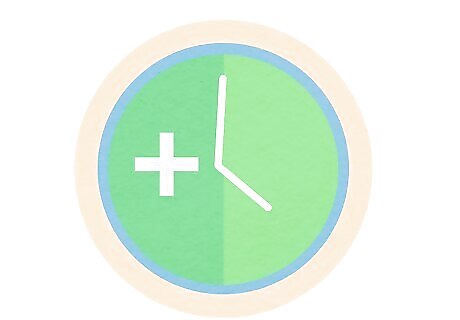
Increase the length of your workouts. Although you may only have 30 minutes to work out most days, if you can, try increasing the length of your workouts. This will help you increase how many calories you can burn. You may not have time for a 45-minute run or a 60-minute spin class. However, even small additions in time can make a difference when it comes to the total amount of calories you burn. Some studies have shown that an additional 5 to 10 minutes can help you burn an extra 50 to 100 calories. If weight loss is your goal, try going for 35 to 40 minute workouts whenever you can. The other days you can stick to those higher intensity exercises to burn 300 calories in 30 minutes.
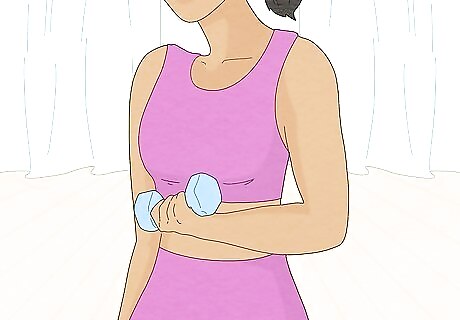
Incorporate strength training. You might not consider strength or resistance training to be a big calorie burner. And by itself, it's not. But when combined with aerobic exercise, it can help you burn more calories. When you have more muscle mass, your body (and metabolism) automatically burns more calories. That's because muscle tissue is active and requires more energy. When you're performing aerobic exercise or even when you're at rest, the more muscle mass you have, the more calories you'll burn. Most health professionals recommend that you include one to two days of strength training throughout the week. You need to work every major muscle group and your workout should be at least 20 minutes in length.

Exercise in the mornings. Another trick to help you burn more calories (especially from fat) is by working out in the morning. Try switching your exercise routine around so your sweat session is in the morning. Studies have shown that those people who work out in the morning before breakfast burn more calories total and burn more of those calories from fat. Try setting your alarm clock for 30 minutes earlier than normal. This will allow you to get up in just enough time to burn off those 300 calories. Although you may not like getting up earlier those first few days, after a while it'll feel more routine and you'll find it easier to wake up.
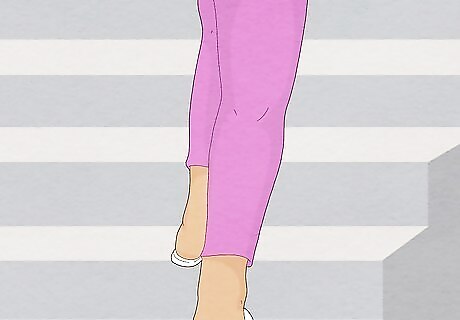
Move more during the day. Another way to help increase your calorie burn over the course of the whole day is by moving more. This increased lifestyle activity can help you torch more calories all day long. Lifestyle activities are those activities or exercises that you do as part of your regular day. Walking to and from your car or house, taking the stairs, sweeping the floor or cleaning are great examples. Try to increase how many steps you take in a day or how often you're moving around. For example, instead of bringing in the grocery bags a few at a time, carry in one at a time. You can extend a quick job to 10 minutes, take more steps and you could burn close to 100 calories.
Modifying Your Diet and Lifestyle to Burn More Calories
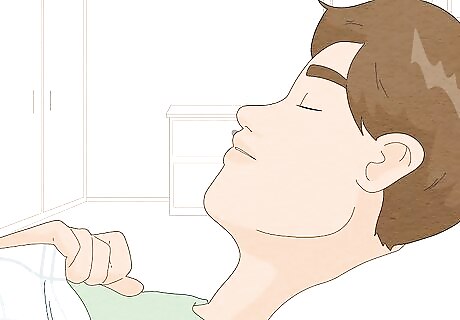
Get more sleep. To help your body burn more calories naturally, make sure you're getting enough sleep. When you're sleep deprived it can affect your metabolism and how many calories your body burns. Health professionals recommend that adults get about 7 to 9 hours of sleep each night. That might mean you need to go to bed earlier or set your alarm clock for later in the morning.
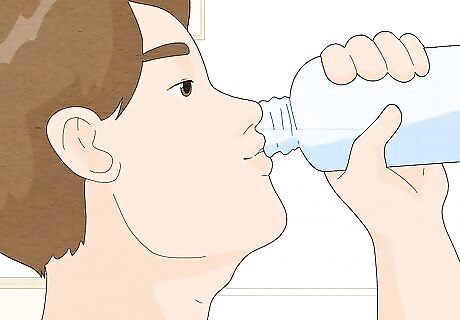
Drink more water. In addition to getting a good night's rest, it's also important to make sure you're drinking enough water during the day. This can affect your weight long-term. Drinking more water doesn't necessarily help you burn more calories. However, it can help keep your appetite at bay and prevent excess snacking or overeating. Aim for at least 64 oz of clear hydrating fluids each day. In addition, stick to the most hydrating fluids like water, flavored water, sparkling water, decaf coffee and tea. To minimize calorie intake, stay away from liquid calories. Drinking beverages like alcohol, sodas, fruit juice, sweet tea or coffee can work against those 300 calories you burned during your workout.
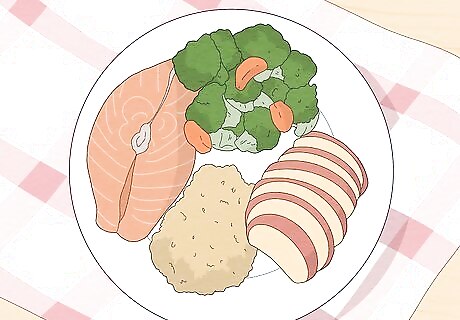
Moderate your portion sizes. If you're working hard to burn 300 calories, try to support that effort by eating well. Keep portions in control to help minimize your total calorie intake during the day. It's important to measure out your portion sizes. Guesstimating how much you're supposed to eat generally results in overeating. Take the time to use a food scale or measuring cups to track your portions. For protein based foods, measure out a 3 to 4 oz serving or about a 1/2 cup per serving. For fruits, measure out a 1/2 cup of chopped fruit, 1/4 cup of dried fruit or about 1 small piece per serving. Vegetables have a bigger serving size. Measure out 1 cup or 2 cups of leafy salad greens per serving. Grains should be measured to a 1/2 cup or about 2 oz total per serving. Also, make sure to measure grains after they've been cooked (like pasta or rice).

Manage stress. Keep your metabolism functioning at a higher level by managing your stress. Over time, chronic stress will effect how many calories your body can burn during the day. Recent research has shown that under stress, your body will burn less calories overall because your metabolism naturally slows. In addition, this stress causes an increase in appetite and the desire for higher fat, higher carb foods. If you have a stress lifestyle, job or home life, work on managing this stress better. Consider: calling a friend to vent, going for a walk, doing meditation, listening to music or reading. If you're having difficulty managing your stress, consider seeking extra help from a behavioral specialist.
















Comments
0 comment